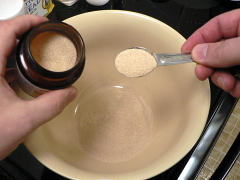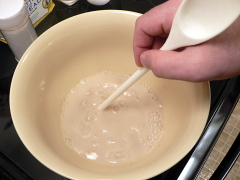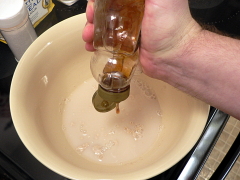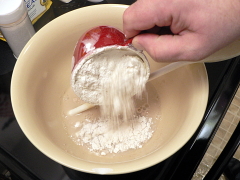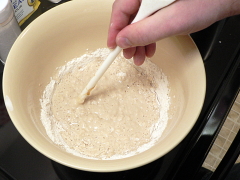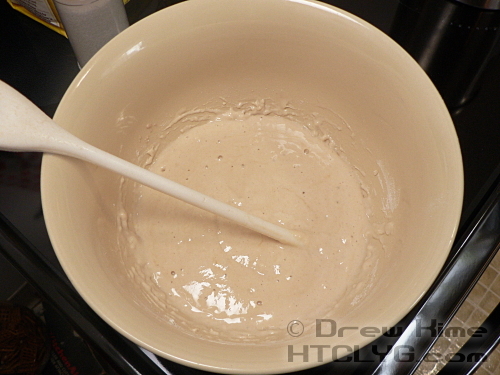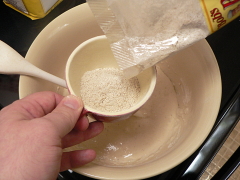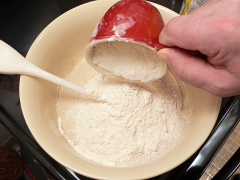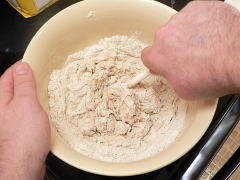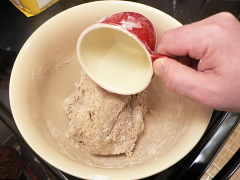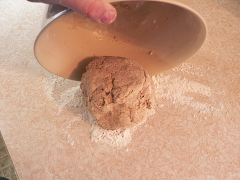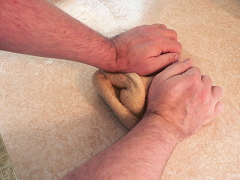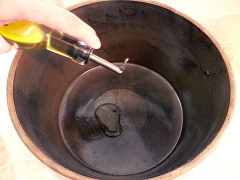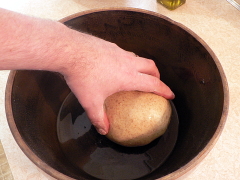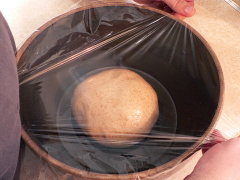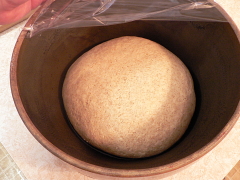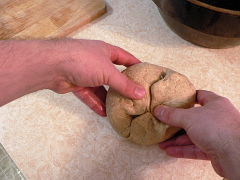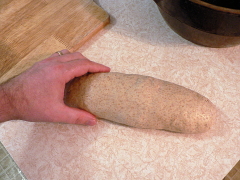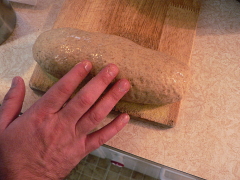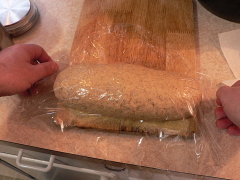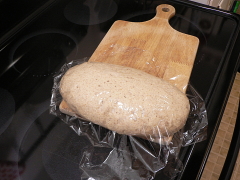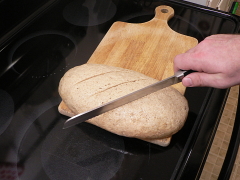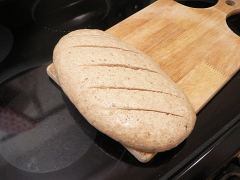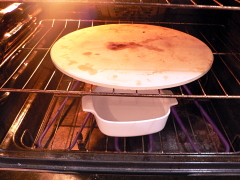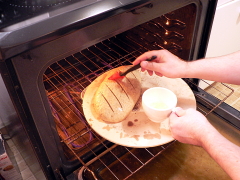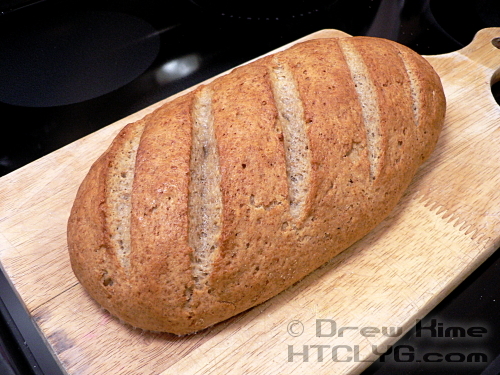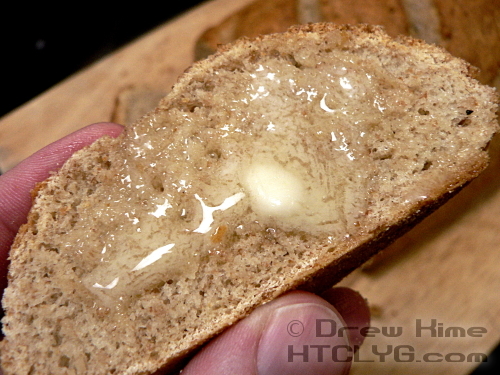I learned my next lesson in bread making: Get the right ingredients. Bread flour is not the same as white flour. It’s higher in gluten, the protein that makes bread chewy. Gluten also holds in the bubbles given off by the yeast, allowing the bread to rise.
This rye would have been really heavy without the bread flour. It’s still pretty dense, compared to commercial white bread anyway. But that’s a good thing. I’ll explain why below.
Ingredients
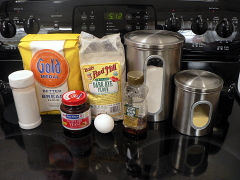
1 cup each rye flour, white flour and bread flour
2 teaspoons active dry yeast (one package)
2 teaspoons honey or sugar
2 teaspoons salt
1 egg white
corn meal for dusting
2-3 tablespoons olive oil
Directions
First we need to proof the yeast. Put the yeast in a bowl and add 3/4 cup of water between 105° and 115° — warm enough to bring it to life, not so hot you kill it. Stir quickly to make sure all the yeast is wet, but don’t over mix. The yeast gets very sticky and can stick to the spoon. That’s why I stir with the handle.
Add the honey or sugar, for the yeast to eat, and the white flour so you can see when the yeast starts working.
If you got the temperature right, and the yeast was still active, after about 10 minutes you should see bubbles starting to come to the top of the mixture. You may not see bubbles, but instead see the top of the mixture bubbling up, like it’s being inflated from below.
Once the yeast is going strong, add the rye and bread flour, and the salt, and stir again.
Here is where my previous experiences with bread paid off. The dough was a little too dry, so I added another quarter-cup of water and mixed a bit more. You’ll have to make bread a few times to get a feel for how dry is too dry. It should be moist enough to absorb all the flour, without being sticky or slippery.
Turn the dough out onto a floured surface and knead for 5-10 minutes, until it is smooth and satiny.
Put enough olive oil in a bowl to coat the bottom. Turn the dough over in the oil until it is coated all over. This keeps the bread from sticking to the bowl as it rises.
Cover the bowl with plastic wrap or a damp towel. This will keep the surface of the dough from drying out and preventing it from rising.
Place the bowl someplace warm for about 1-1/2 hours, until the dough has doubled in size. Punch it down to knock most of the air out.
Tuck the edges under so you have a ball that is smooth on top. You can set it aside like this for the second rise and make a round loaf. I rolled it out into an oblong shape.
Round or oblong, you’re going to need to leave it another 45 minutes for the second rise. If you’ll be using a pizza stone, dust the end of a cutting board or pizza peel liberally with corn meal. Really load it up, you don’t want the dough to stick even a little bit. If you’ll be using a baking sheet, just do this directly on the baking sheet.
Place the dough on the edge of the cutting board. Brush a little olive oil on the dough so the plastic doesn’t stick and cover the dough with a piece of plastic wrap. Again, this is to keep the surface from drying out and preventing rising.
Once it has doubled in size again, about 45 minutes, slash the top with a serrated knife. This will allow the top to expand and rise more as it bakes.
Place a shallow bowl or casserole dish half-full of water on the bottom rack of the oven, the pizza stone one rack above, and pre-heat to 400°. The steam will give the bread a crustier finish.
Separate the egg and beat the white together with a tablespoon of water to make an egg wash. If you use the yolk you’ll get a shiny finish. Using just the egg white will give a crispy surface without adding a shine. Brush the egg wash onto the top of the bread before transferring it to the pizza stone.
Yes, I said “before”. Yes, it’s already on the pizza stone in that picture. As I was sliding the dough onto it I saw the egg sitting in front of me. Oh well.
Bake at 400° for 15-20 minutes. To check that it’s done lift the loaf using a spatula, flip it upside-down into your other hand (use a pot holder or towel — it’s hot!) and tap on the bottom. It should sound hollow.
Because it is firmer than store-bought white bread, you can slice this with a non-serrated knife and not get a lot of crumbs.
Yes, most of this is going to be used to make corned beef sandwiches. But try a slice with butter while it’s still hot from the oven. Any bread is good with butter hot from the oven.
And that’s it.

